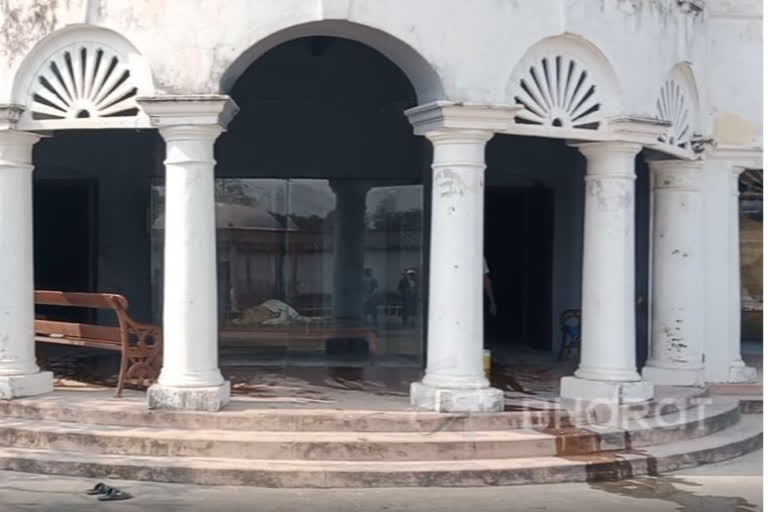Siwan: Nation today marked the 137th birth anniversary of the first president of India, Dr Rajendra Prasad. Like every year, many programmes were being organised at Dr Prasad's birthplace in Siwan and at his ancestral residence in Jiradei. However, it is imperative to notice that even after 75 years of independence, his place of birth has still not seen development. There has been no significant change in the condition of Jiradei village, located at a distance of about 14 km from Siwan district headquarters.
There is no facility at Jiradei railway station except two or four benches and platforms for passengers to sit. There are no proper commutation facilities here nor arrangement of toilets and waiting rooms.
As told by the local residents of Jiradei, the state dispensary that was established in Jiradei village in the name of Rajendra Babu's wife Rajvanshi Devi has turned into ruins due to the neglect of the government.
However, with the intention of maintaining the dignity of the Bharat Ratna and his heritage, the ancestral house of Dr Rajendra Prasad at Jiradei has been handed over to the Archaeological Department by the Central Government, due to which it has survived as one of his memories.
The state government had announced that it will be turned into a tourist destination, but no exercise has been started in this direction yet. Hundreds of tourists and visitors come here every day anyway, with a wish that the government should convert Dr Prasad's house into at least a museum or a library.
Omprakash Yadav, a former BJP MP from Siwan, had adopted Jiradei under the Pradhan Mantri Gram Vikas Yojana. But even after the adoption, Jiradei has not been developed. According to the local people, officials and leaders remember Jiradei and Dr Prasad only on their birth anniversary. After garlanding and paying tributes to his statue, all his glory lays forgotten there.
Also read: Remembering Rajendra Prasad's contribution to India's Constitution
Dr Prasad was born on December 3, 1884, in a village called Jiradei in the then Saran district of Bihar. His father, Mahadev Sahay was a scholar of Sanskrit and Persian and his mother Kamleshwari Devi was a religious woman. He was married at the early age of 12 to Rajvanshi Devi. Behind his simple-looking face was a man of high intellect and leadership.
Dr Prasad's journey towards becoming the first President of India started in July 1946, when he was appointed as the President of the Constituent Assembly entrusted with the responsibility of the formation of the Constitution of India. Before that, he also served as the National President of Congress after the resignation of Netaji Subhash Chandra Bose in 1939.
After two and a half years of independence, the Constitution of independent India was implemented on January 26, 1950, and Dr Rajendra Prasad was elected as the first President of India. He used his powers as President very wisely and set a competent precedent for others.
Having retired in the year 1962, post a 12-year term as the President, he was awarded the country's highest civilian honour - 'Bharat Ratna'. After retirement, he spent some months of his life at Sadaqat Ashram in Patna. Dr Rajendra Prasad passed away on 28 February 1963.



